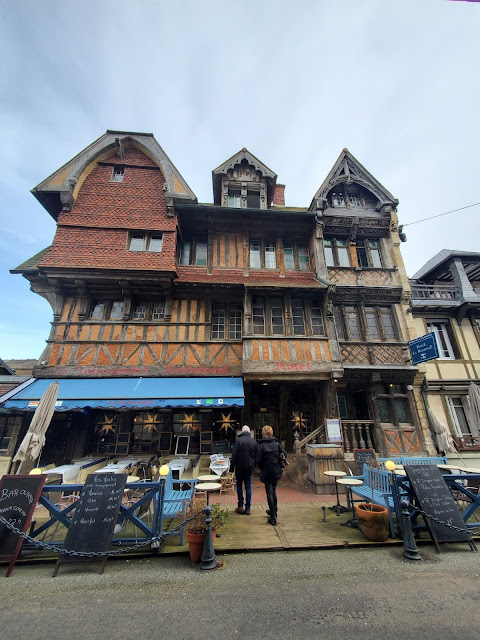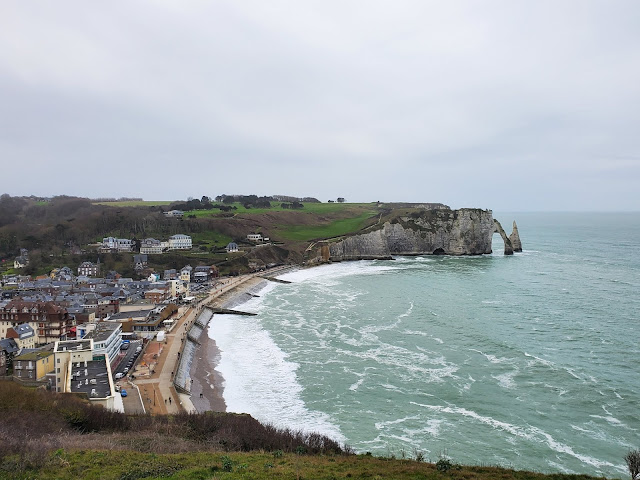Normandy: The Beauty of France Outside of Paris
Getting to Normandy is fairly easy, it's all in how you're willing to travel. We flew into Charles De Gaulle Airport, arguably the worst major international airport in the world. We've flown into every continent in the world with an airport, and even landed on some of the most remote islands in the world, and all of them have more organized and coherent airports than CDG. The terminal number system is completely ridiculous, and getting between places takes an act of God to achieve. That being said, if you want to fly into mainland Europe from the United States, you have few choices. Most flights go to Paris, some will go to Amsterdam, and some will go to Rome. From there you can take connecting flights to anywhere you desire. Getting to Normandy, there is the rail system, but I would recommend against this. We're huge fans of the European rail system, but many of the small towns you're going to want to visit in Normandy may not have train stations, or the places you're looking for are several miles outside of town, so you would still need a car. We rented a car from Hertz, and set off directly from the airport. The drive is easy. Remember to download an offline map of whatever region you are visiting onto Google Maps before you go on vacation. That way you can use your phone as a GPS without having to use roaming data. The drive from Paris to Rouen, our first stop, only took about two hours, and was completely pleasant. I've driven in many countries around the world, and I can't think of any other country that has a road system as close to the United States. Every adult will be comfortable driving there.
Our first stop on our trip was our shortest stop, Rouen. The capital of Normandy, it has been the seat of power in the region for more than a thousand years. Rouen was the scene of some of the most dramatic fighting in the poorly named Hundred Years' War. It was the scene of the most famous burning of medieval times, the execution of Joan of Arc, a teenage girl who led the French forces to victory before being captured by the English. It would later serve as the headquarters for several Nazi divisions during World War II, and was part of the attacks on D-Day. The edges of Rouen today look like any other modern city with tall office and apartment buildings, but drive down to the medieval heart of the city and you will find the views that people travel around the world to find. In the pedestrian only old town, you can walk around buildings that have been there for centuries, including the massive Rouen Cathedral, the tallest church in France. A church has been located on this site since the 5th Century A.D., and the building there today has been in place for more than since the 12th Century. One of the interesting pieces of history about this cathedral for you fans of Vikings is that Rollo, the first Duke of Normandy, and former Viking who conquered the region of northern France, is buried in the cathedral. Whether the depiction of him carved into his sarcophagus is accurate or not, the image of him for posterity is one of a civilized French noble. Just a few blocks away from the cathedral is the Gros Horloge, a gigantic astronomical clock that has been in place over the city since the 1389 A.D. The clock, which is believed to the largest medieval clock still in existence, is more than 10 feet tall, and has its own walkway beneath that leads you towards the cathedral. Head down to the Eglise Sainte-Jeanne-d'Arc, an oddly modern church in this ancient city to find another piece of history. Sitting there in the courtyard of the church is the location where Joan of Arc was burned alive for the crimes of heresy and cross-dressing. I was a little shocked at how understated this marker was for her execution given the lore around her story in modern times. For dinner head across the square to La Couronne, the oldest restaurant in France. Opened in 1345 A.D., it's famous as the restaurant that served Julia Child her first French meal, which led her to devote her life to cooking. As a historian, I think about the people who must have walked over from the burning of Joan of Arc, and then calmly sat down to dinner not knowing they had witnessed history. The walls of the restaurant are covered with portraits of the celebrities who've visited there for dinner throughout the centuries including Cornelius Vanderbilt, Queen Elizabeth II, and John Wayne. While we were there that day we got to experience a little French socialism in action. Since 2019, angry French citizens have been taking to the streets every weekend in a modern version of the Occupy movement of the previous decade. What I'm sure was intended to be a demonstration for change when it was started has just turned into some kind of sad purge type situation. All throughout the streets were drunken twenty-somethings walking around with masks on their face, and I'm sure complaining about needing a job that pays them a "living wage" but still lets them drink every afternoon. They would stop cars trying to drive down the one street in the old town, and then begin chanting something at the people inside the car in French. This is not the first protest we've wandered into in Europe, and at no point did I feel unsafe, but at one point when we were about a block away one of these future French leaders felt the need to set off a small explosive. That was enough for the police who quickly swarmed into the area in riot gear. Please don't let this scare you away from the town. It felt unbelievably safe, and I'm sure that was a singular event.
The next day we left Rouen and set out for the small coastal town of Étretat. We actually weren't going to spend long there, but once we arrived we couldn't bring ourselves to leave. Étretat is famous for their iconic white cliffs that hover above the shore line. The town is unbelievably picturesque, and was the setting for several Claude Monet paintings more than a century ago. One of the unique places to visit is the unbelievable Église Notre-Dame de Gap. Sitting on top of the white cliffs, it seems like the kind of place that was built centuries ago as a test of faith. Walking up the steep cliffs is your cardio exercise for the day. While modern travelers can also get there by car, I can't imagine riding a horse up the narrow winding path in the 17th & 18th Centuries. Take a walk along the hilltop trail that stretches on both sides of the town, and get some pictures of the amazing cliffs. While we only hiked for about a mile, the trails go on for miles in each direction. When you get back down to the bottom, go visit the main church in the town, Église Notre-Dame d'Étretat. If you feel like taking in a little more history, walk over towards the Étretat Churchyard to visit a unique cemetery. This cemetery is home to over 500 British soldiers who died fighting to save France in World War I. Strangely though, there are also about a dozen German soldiers who are buried there too. When you are done with all of the historic stuff, walk around to the shops that are in town. They are apparently famous for their biscuit shops, that's cookies and not American biscuits. They have a market in the middle of town that had a hat shop, knifemaker, and other crafts.
Our final stop in Normandy, that wasn't D-Day related, took us possibly the most iconic image of the region, the island fortress of Mont-Saint-Michel. Located on the far western end of Normandy, almost to the next region called Brittany, Mont-Saint-Michel is a rocky island that for centuries has been protected from invaders by the rising tides which completely cutoff access to the village on the island. People have been using it as a fort since the time of the Romans, but the current fortifications began as far back at the 8th Century A.D. when the archangel Michael told Aubert, the Bishop of Avranches, to build a church on the island. Over the next thousand years, the church become a fort that was used during many wars including the Hundred Years' War. In modern times, the town is all packed inside the medieval town walls, and is home to hundreds, if not thousands, of day trippers every day. If you're going to go, I would recommend spending the night. I would also recommend going when a pandemic has broken out too. When we arrived and wandered through the town at night we were almost completely alone. Wander along the ramparts that still over look the water and inland so that you can imagine how knights would have lived more than six hundred years ago. Get up early the next morning and go visit the abbey that sits at the top of the hill. Again, we were almost completely alone there, and could have easily taken a nap in the place it was so quiet. All throughout this labyrinth of chapels and halls you will see an abbey that expanded multiple times over a thousand years. There are knights and monks who are buried in the floors, and there are gardens built on rooftops to provide a peaceful place to relax for the generations of inhabitants. While you're walking along the roof overlook, look at the mason's marks that are on each stone. These were used to show which stones each mason had carved so he could prove how much he needed to be paid. Walk out to the edge and look at the downspouts hanging over the edge. They're completely useless because the winds coming off the ocean hit the stone fortress, shoot straight upwards, and are so powerful that they send the water upward like some form of medieval sprinkler for the complex. One unique place on the island, which we didn't visit so I can't recommend, is La Mere Poulard. They have the distinction of claiming to have invented the omelet. These are apparently omelets made with gold because they were about $30 each, and one was even $60. While I appreciate history, I also appreciate the free omelet at our hotel's breakfast buffet.
I can't speak enough about how beautiful this region of France is, and how much I hope that everyone gets to visit. Our next post will be about Bayeux and the D-Day beaches, which many Americans have had the opportunity to visit. I would recommend if you're planning a trip to see the beaches of Normandy, give yourself 3-4 extra days so that you can take in all of these other towns because they are all spectacular.







































Post a Comment